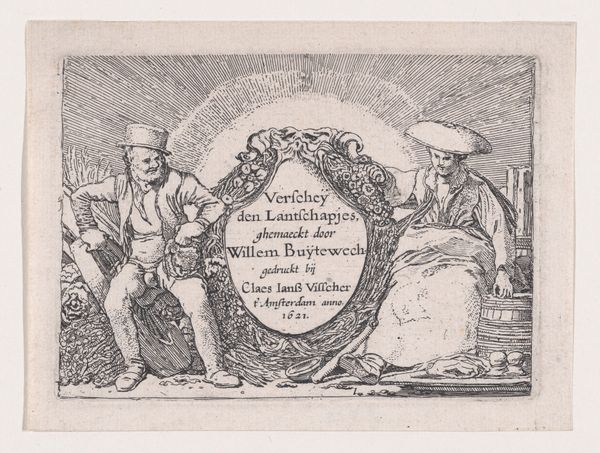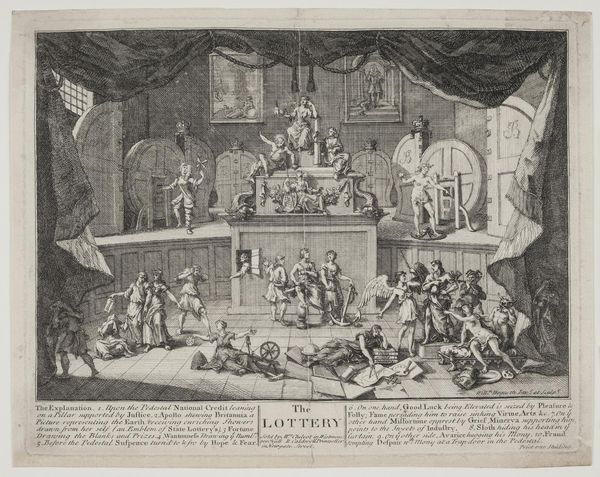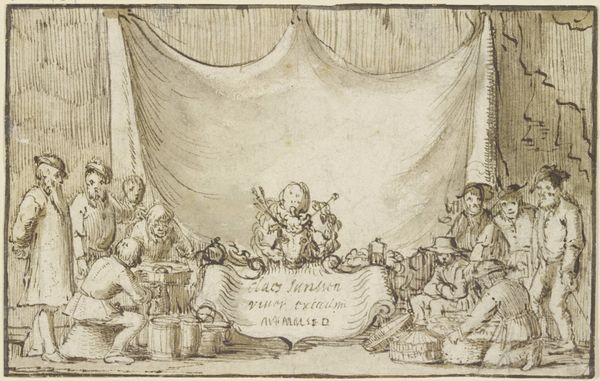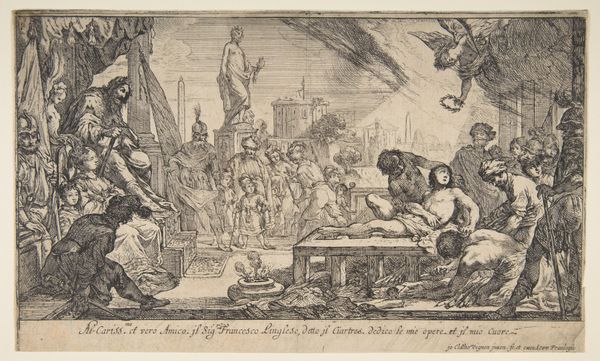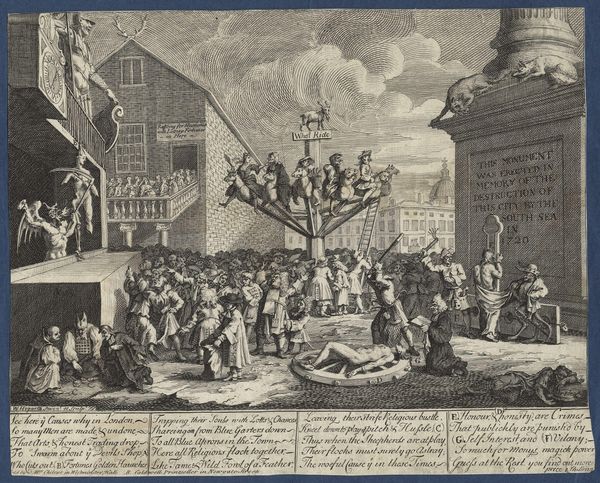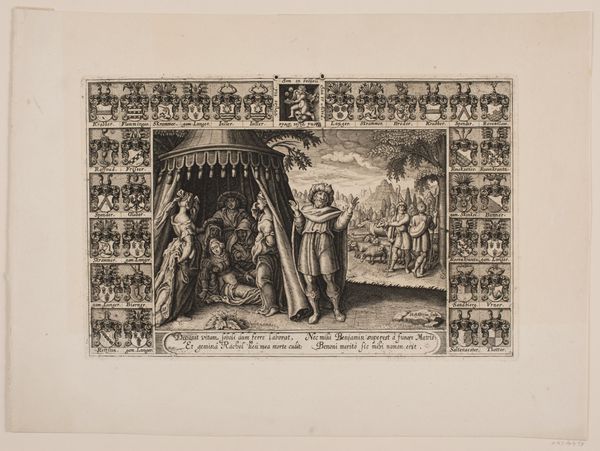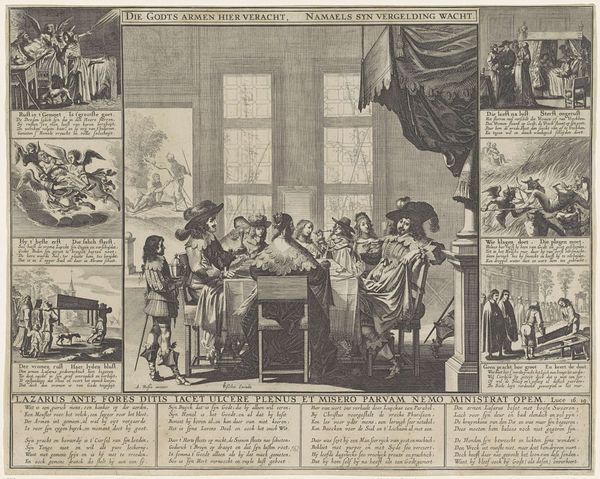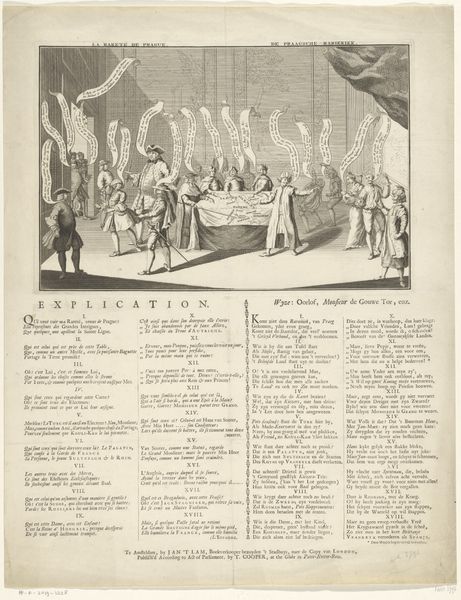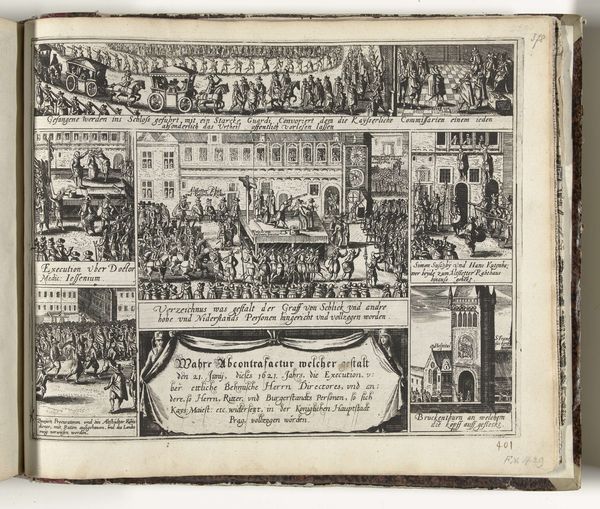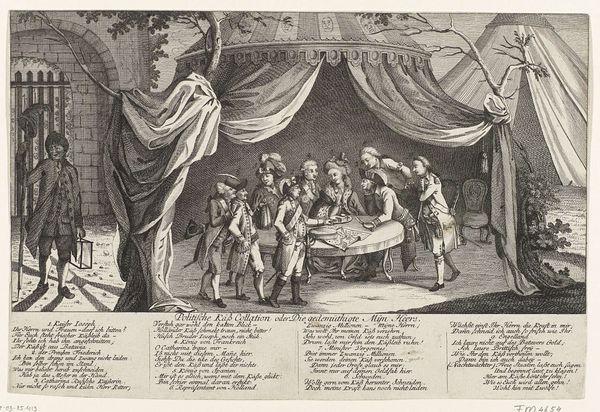
The Moray Minstrels (Invitation card of Arthur James Lewis) 1865
0:00
0:00
drawing, print, pen
#
drawing
#
pen drawing
# print
#
pen illustration
#
pen
#
genre-painting
Dimensions: Block: 5 1/2 × 7 15/16 in. (14 × 20.2 cm) Sheet: 5 13/16 × 8 1/4 in. (14.7 × 21 cm)
Copyright: Public Domain
Curator: Let's turn our attention to "The Moray Minstrels," an invitation card created by William Harcourt Hooper in 1865. It's a pen drawing, an exquisite example of printmaking meant for distribution, housed here at the Met. What captures your eye? Editor: Immediately, it feels like stepping into a quirky Victorian salon. It's both inviting and a little theatrical, like a tiny proscenium arch is framing this genteel party scene. A bit fussy, no? Curator: Consider how meticulously Hooper combines information design with symbolic representation. The gathering is precisely for Arthur J. Lewis, at his residence, Moray Lodge, with music scheduled at 8:30 and oysters to be served at eleven. Editor: Those flanking figures are bizarre! Is she holding a chamber pot and gesturing toward the revelry to begin at precisely 8.30. Are those oysters being delivered to Moray Lodge after the recital? What an evening! The contrast is amusingly surreal. Curator: It's all meticulously crafted using pen, demonstrating considerable skill and attention to detail typical of graphic arts from this era, where printed ephemera acted as status symbols. And notice how those ladies are goddesses bringing good cheer and a plenitude of earthly delight? Editor: Sure, from a materialist perspective, we can see the emphasis on production—both in making the card itself and the lifestyle it represents. Those ladies still look weird...but their production of cheer feels decidedly weird. Curator: The context is equally fascinating—the rise of middle-class entertainment, domestic sociability carefully packaged and marketed through these intricate invitations, each designed to impress. It suggests a specific type of patronage, the demand for high-quality artisanal prints driving production forward. Editor: This card serves a vital historical function, like the Victorian equivalent of an Evite, yet infused with the aesthetic sensibilities of the Arts and Crafts movement. It hints at deeper currents beneath the surface frivolity. Curator: Precisely, viewing such objects underscores the intricate interplay of social ritual, artistic labor, and economic aspiration within Victorian society. Each pen stroke represents countless commissions. Editor: It does provoke reflection about the value we place on art, labor, and access. Who gets to receive such an invitation and share those oysters? The power dynamic makes it… digestible! Curator: That's an astute observation. A small piece like this opens up discussions far beyond aesthetics. Editor: It also is a nice invitation, actually! Makes one want to time travel back for the oyster feast!
Comments
No comments
Be the first to comment and join the conversation on the ultimate creative platform.
